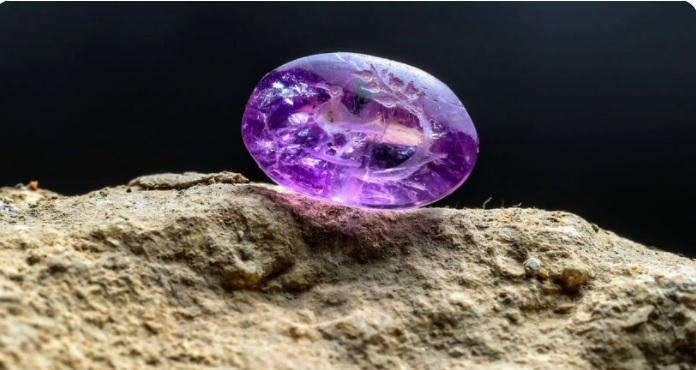Israeli archaeologists on Thursday revealed the discovery of a 2000-year-old depiction of Biblical 'balsam tree'. It was found in Jerusalem. The small lilac stone features the engraving of a bird and a branch with five fruits.
The news was first reported by the The Jerusalem Post. The City of David, the Israel Antiquities Authority and the Israel Nature and Parks Authority jointly announced on Thursday that the iridescent stone probably features the first-ever known depiction of a plant prominently mentioned in the Bible as well as in later Jewish and historical sources.
The lilac stone had fallen in the main drainage channel of Jerusalem from the Second Temple period. The Second Temple period in Jewish history lasted between 516 BCE and 70 CE, when the Second Temple of Jerusalem existed. The sects of Pharisees, Sadducees, Essenes, Zealots and early Christianity were formed during this period. The Second Temple period ended with the First Jewish–Roman War and the Roman destruction of Jerusalem and the Temple.

'Lost and Found' Story of the lilac Stone
There's an intriguing story that describes the 'lost and found' story of the precious stone. In the last decades before the destruction of the Second Temple Period, someone, a Jew, possibly a pilgrim, walked on the road connecting the Shiloah Pool at the outskirts of Jerusalem with the Temple Mount.
The person wore a delicate ring bearing an engraved lilac amethyst stone. However, due to the crowded and chaotic situation, the ring broke, and the stone slipped into the underground drainage channel.
Nearly after 2,000 years, the tiny artifact was recovered. The archaeological excavation was conducted at the foundations of the Western Wall on behalf of the IAA and the City of David. The seal was found by participants in the project "Archaeological Experience" at the Emek Tzurim National Park supported by the City of David and the Nature and Parks Authority.
Significant Discovery
The oval stone, approximately 10 mm. long and 5 mm. wide also features a bird, probably a dove, reported the The Jerusalem Post.
"This is an important find because it may be the first time a seal has been discovered in the entire world with an engraving of the precious and famous plant, which until now we could only read about in historical descriptions," said archaeologist Eli Shukron.
Experts were curious to know more about the elongated branch bearing five fruits engraved on the stone because it appeared to be something different from any other species ever found portrayed on seals from the time.









